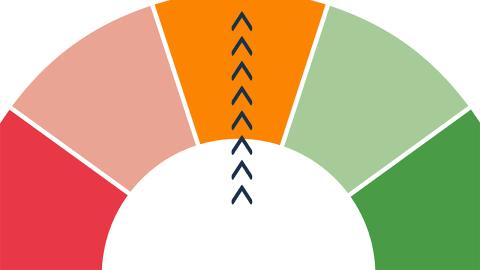A proposed permanent network of electromagnetic monitoring stations across the continental US, operating in tandem with a machine learning (ML) algorithm, could facilitate accurate predictions of geomagnetic disturbances (GMDs). If realized, this…
filters
Explore All Topics
Uptime Intelligence uses historical status updates from Amazon Web Services, Google Cloud Platform and Microsoft Azure to calculate the availabilities of several cloud architectures, including a multi-cloud implementation.
Uptime Institute’s outages database suggests data center fires are infrequent, and rarely have a significant impact on operations. Uptime has identified 14 publicly reported, high-profile data center outages caused by fire or fire suppression…
Cloud providers advise users to build application resiliency by deploying across multiple locations. This report quantifies the emissions, resiliency and costs of different stateless cloud-application architectures.
The US Space Weather Prediction Center (SWPC) issued multiple geomagnetic storm watches throughout August and September 2022. Geomagnetic storms occur when solar storms interact with the Earth’s atmosphere and magnetic field, risking disruption to…
An extreme heat wave swept across much of Western Europe on July 18 and 19, hitting some of the largest metropolitan areas such as Frankfurt, London, Amsterdam and Paris — which are also global data center hubs with hundreds of megawatts of capacity…
Nearly 15 years ago – in 2008 – Uptime Institute presented a paper titled “The gathering storm.” The paper was about the inevitability of a struggle against climate change and how this might play out for the power-hungry data center and IT sector…
A reliance on digital services since the start of the COVID-19 pandemic in early 2020 and governments’ increased concerns about the risks and resiliency of digital infrastructure have resulted in numerous new proposals for stricter legislation. If…
Cloud providers tend to adopt the latest server technologies early, often many months ahead of enterprise buyers, to stay competitive. Providers regularly launch new generations of virtual machines with identical quantities of resources (such as…
In recent years, Uptime Institute has published regular reports examining both the rate and causes of data center and IT service outages. The reports, which have been widely read and reported in the media, paint a picture of an industry that is…
As a result of some high-profile outages and the growing interest in running critical services in a public cloud, the reliability — and transparency — of public cloud services has come under scrutiny.Cloud services are designed to operate with low…
Analyzing human error — with a view to preventing it — has always been challenging for data center operators. The cause of a failure can lie in how well a process was taught, how tired, well trained or resourced the staff are, or whether the…
The proposed Digital Operational Resilience Act (DORA) will introduce new reporting and resiliency requirements in Europe - and many authorities around the world are expected to be heavily influenced by these plans.
Control over critical digital infrastructure is increasingly in the hands of a small number of major providers. While a public cloud provides a flexible, stable and distributed IT environment, there are growing concerns around its use.These concerns…
In the 2020 Uptime Institute Intelligence report The gathering storm: Climate change and data center resiliency, the author noted that, “While sustainability… features heavily in the marketing of many operators, the threat of extreme weather to…
 Jacqueline Davis
Jacqueline Davis

 Dr. Owen Rogers
Dr. Owen Rogers

 Max Smolaks
Max Smolaks
 Daniel Bizo
Daniel Bizo


 Andy Lawrence
Andy Lawrence
 Douglas Donnellan
Douglas Donnellan

 Intelligence Team
Intelligence Team